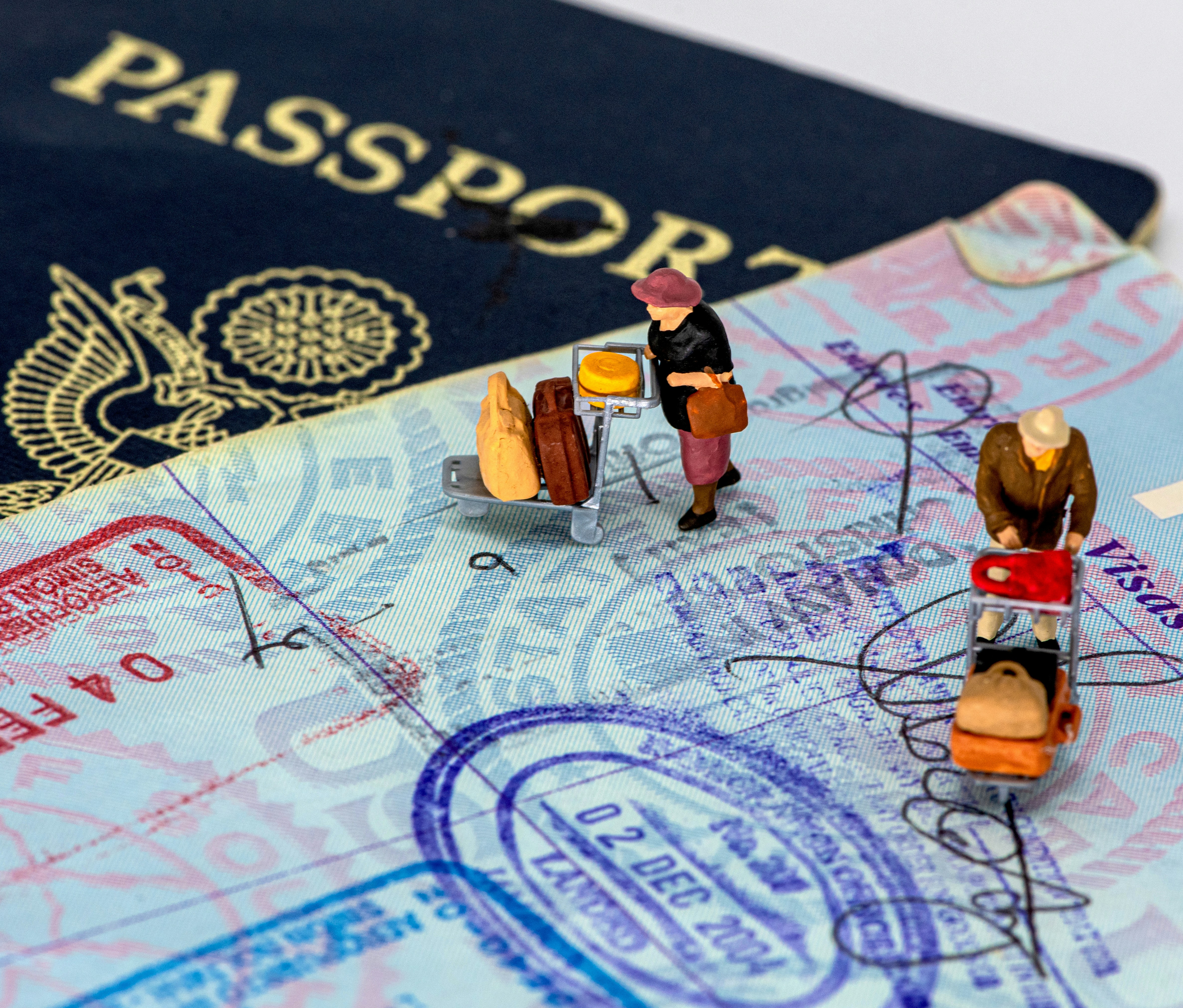Step-by-Step Guide: How to Apply for a Canadian Visa

Introduction to Canadian Visa Types
Canada is a popular destination for individuals seeking to visit, study, work, or establish permanent residency. Understanding the different types of Canadian visas available is crucial for navigating the immigration process effectively. Each visa type is designed to serve distinct purposes and caters to various individual circumstances. Familiarizing oneself with these categories can significantly streamline the application journey.
The most common type of visa is the visitor visa, which allows individuals to travel to Canada for tourism or to visit family and friends. This visa typically permits stays of up to six months and does not allow the holder to work or study. To apply for a visitor visa, it is essential to demonstrate sufficient financial resources to support oneself during the stay, along with proof of ties to the home country to ensure intention to return.
For those looking to further their education, study permits are necessary for international students intending to enroll in Canadian educational institutions. Obtaining a study permit usually requires proof of acceptance from a designated learning institution and evidence of sufficient funds to cover tuition and living expenses while studying.
Work permits are required for foreign nationals seeking employment in Canada. This type of visa varies based on the nature of the job offer and may require the employer to obtain a Labour Market Impact Assessment (LMIA) to demonstrate that hiring a foreign worker will not negatively impact the Canadian job market.
Lastly, the permanent residence visa is aimed at individuals wishing to settle in Canada permanently. This category encompasses several sub-categories, such as family sponsorship, the Express Entry system for skilled workers, and provincial nominee programs. Understanding the specific requirements of each visa type tailored to your unique situation is vital and will aid in a successful application process. This guide serves as a valuable resource to navigate these complexities, enabling potential applicants to make informed decisions on their immigration pathway to Canada.
Determine Your Eligibility
Before applying for a Canadian visa, it is crucial to assess your eligibility based on various criteria specific to the type of visa you intend to pursue. Canada offers multiple visa categories, each with unique requirements. Evaluating your circumstances against these factors can help streamline your application process.
First, nationality plays a significant role in determining eligibility. Certain nationalities may be subject to additional restrictions or requirements. For instance, visa-exempt countries allow travelers to enter Canada without a visa, provided they have an Electronic Travel Authorization (eTA). Understanding your nationality’s standing in relation to Canadian immigration laws is essential for a successful application.
Your financial stability is another critical aspect. Most visa categories require proof of sufficient funds to support yourself during your stay in Canada. This may include bank statements, employment letters, or proof of income. Assessing your financial situation ahead of time ensures you meet the minimum financial requirements outlined for the visa class you are interested in.
The purpose of your travel is also a determining factor for your eligibility. Canada offers visas for various reasons, such as tourism, work, or study. Each visa type has specific documentation requirements and acceptance criteria. Clearly defining the purpose of your trip enables you to choose the appropriate visa class, thus enhancing your chances of approval.
Additionally, previous immigration history, including any past visa denials or overstays, can affect your eligibility. A clean immigration record is often preferred, as it reflects your compliance with immigration laws. It is advisable to review any previous applications and ensure that they align with the current requirements for the visa you wish to apply for.
In conclusion, taking the time to evaluate these essential elements—nationality, financial status, purpose of travel, and immigration history—will significantly improve your chances of qualifying for a Canadian visa. Proper preparation and understanding of each visa type’s requirements is pivotal in this process.
Gather Required Documents
Applying for a Canadian visa requires careful preparation of various documents to ensure a smooth application process. It is essential to gather the necessary paperwork well in advance of your intended travel date. Having these documents ready not only expedites the process but also aligns with the stringent standards set forth by Canadian immigration authorities.
First and foremost, personal identification is a crucial component of your application. This includes a valid passport that remains effective for the duration of your stay in Canada. Ensure that your passport has sufficient blank pages for visa stamps. Photocopies of these identity documents may also be required, so it is wise to prepare several copies.
Financial statements are another critical aspect of the application. You must provide proof of your financial situation by submitting bank statements or pay stubs. These documents indicate that you can comfortably support yourself during your time in Canada, thus mitigating concerns over potential financial burdens on Canadian resources.
Additionally, proof of employment is vital, especially for applicants who are employed. A letter from your employer confirming your position, salary, and the duration of your leave can strengthen your application. If you are self-employed, documentation such as tax returns or business registration is necessary.
Travel itineraries are also important, as they provide a comprehensive outline of your intended travel plans within Canada. This should include flight bookings and accommodations. If applicable, invitation letters from Canadian residents or organizations can further bolster your case for receiving a visa.
Lastly, medical records, including vaccination certificates and tests (if required), should be organized. Some applicants may need to provide proof of a medical exam under specific circumstances. Gathering and preparing these documents meticulously will help avoid delays and improve your chances of a successful visa application.
Complete the Online Application Form
Applying for a Canadian visa necessitates filling out an online application form accurately. The first step is to access the official Canadian immigration website, which houses all necessary forms and guidelines. Ensure that you are on the correct platform; using unofficial sites can lead to misinformation and submission errors. Once on the homepage, navigate to the relevant visa category that suits your needs. This could range from visitor visas to work permits, depending on your purpose of travel.
The application form itself is intuitive and designed to guide you through the various sections. It is important to read each question carefully before providing a response. Commonly, applicants encounter confusion in sections requiring personal details, travel history, and employment information. Each of these details should be filled out meticulously to avoid inconsistencies that may delay the review process. Furthermore, you will need to provide identification documents, such as a passport scan or other pertinent paperwork, depending on the visa type.
In filling out the form, be vigilant about the accuracy of the information you provide. Minor errors, such as misspellings or incorrect dates, can negatively impact your application. It is advisable to double-check all answers before submission. Additionally, familiarize yourself with the common mistakes that applicants make, like skipping sections or providing incomplete information. Such oversights can lead to application rejection.
To enhance your application’s chances of approval, consider using clear and concise language throughout the form. Once you have completed the online application, take the time to review it thoroughly before submitting. This diligence is essential in ensuring a smooth application process for your Canadian visa.
Pay the Application Fee
Paying the application fee is a critical step in the process of applying for a Canadian visa. The fee structure varies depending on the specific type of visa one is applying for, whether it be a temporary resident visa, a work permit, or permanent residence. As of the latest updates, individuals should ensure they are aware of the current fees associated with their visa category, as these may change periodically. It is advisable to check the official Immigration, Refugees and Citizenship Canada (IRCC) website for the most accurate and up-to-date information regarding the exact fee amounts.
Applicants typically have several payment options available, including online payment methods which are considered the most convenient. Online payments can be made using credit cards or other secure payment options. It is essential to follow the guidelines provided by the IRCC when making online payments to ensure that all information is entered accurately. Once the payment has been successfully processed, applicants will receive a fee receipt, which serves as proof of payment. It is crucial to keep this receipt, as it may be required during subsequent stages of the application process.
Non-payment of the application fee can have serious implications for one’s visa application. If an application is submitted without the required fee, it could be deemed incomplete, resulting in delays or outright rejections. Therefore, it is vital to double-check that the right amount has been submitted before moving forward with the application. On occasion, applicants may also be subject to additional fees for specific services or processing times. Thus, being aware of all fee obligations is paramount in ensuring a smooth application process for a Canadian visa.
Submitting Your Application
Once you have meticulously completed your Canadian visa application, the next critical step is the submission process. There are two primary methods for submitting your application: online submission and paper application. Each method has its distinct guidelines and best practices that must be followed to ensure your application is processed smoothly.
For online submission, you will first need to create an account on the Immigration, Refugees and Citizenship Canada (IRCC) website. After logging in, simply follow the prompts to upload your application and any required documents. It is essential to review each component of your application carefully before finalizing your submission, as any errors or omissions can delay processing times or even result in rejection.
Alternatively, if you choose to submit a paper application, download the necessary forms from the IRCC website, print them out, and complete them with precision. Pay special attention to the details, including your personal information, the purpose of your travel, and any supporting documentation required. Ensure that all forms are signed where necessary and that you have included the appropriate fees. Sending your application to the correct address is also paramount; verify the submission instructions specific to the type of visa you are applying for.
Regardless of the submission method, it is advisable to keep copies of all documents included in your application. This serves as a personal record and can be beneficial if any questions arise during processing. Following submission, you should monitor the status of your application. This can be done through your online account for e-submissions or by contacting the appropriate visa office if you submitted a paper application.
Attend an Interview (if Required)
As part of the Canadian visa application process, some applicants may be required to attend an interview. The necessity of an interview often depends on various factors, including the type of visa being applied for, individual circumstances, and the discretion of the immigration officer handling the application. It is crucial to be prepared, should you receive an interview request, as this step can significantly influence the outcome of your application.
The interview is generally aimed at clarifying doubts about your application, verifying the information you provided, and assessing your eligibility for the visa. Therefore, it is advisable to carefully review your application materials and familiarize yourself with the details, such as your travel itinerary, financial situation, and the purpose of your visit to Canada. This preparation will help you answer questions confidently and accurately during the interview.
Typical questions may vary but often include inquiries about your travel plans, personal background, relationships in Canada, and your intentions upon arrival. It is essential to respond honestly and clearly, as any discrepancies in your answers could raise concerns or lead to misunderstandings. Presenting yourself professionally is equally important; dress appropriately, maintain eye contact, and demonstrate a respectful demeanor throughout the interview.
It is worth noting that not all applicants will be required to attend an interview. Many factors contribute to this decision, such as the completeness of your application, the information provided, and your background. However, being prepared for the possibility enhances your chances of presenting a strong case should you be requested to attend an interview. The key is to remain composed, authentic, and informed about your visa application, which ultimately increases your likelihood of a successful result.
Wait for the Decision
After submitting a Canadian visa application, applicants must navigate the waiting period before a decision is made. The time frame for processing can vary significantly depending on the type of visa applied for. Generally, temporary resident visas may take anywhere from a few weeks to several months for approval. In contrast, permanent residence applications typically require a more extended wait, often lasting anywhere from six months to over a year, contingent on the specific immigration program and individual circumstances.
During this waiting period, applicants can remain proactive by regularly checking the status of their application. This can usually be done through the Immigration, Refugees and Citizenship Canada (IRCC) website or their online account if an application was submitted electronically. The status updates provide insight into whether the application has been received, whether further documentation is needed, or if a decision has been reached. It’s worthwhile to note that applicants may receive communication from IRCC requesting additional information or an interview, which can influence the waiting period.
There are several potential outcomes to anticipate. An application may be approved, leading to the issuance of a visa for the applicant. This opens the door to the opportunity to travel and settle in Canada, assuming all conditions are met. Conversely, an application may be refused, often accompanied by a detailed explanation outlining the reasons for the decision. Understanding these outcomes and the reasoning behind them can be beneficial for future applications, should an applicant decide to reapply or pursue other Canadian immigration avenues.
Receive Visa and Prepare for Travel
Upon receiving your Canadian visa approval, the next steps involve thorough preparation for your journey and entry into Canada. It is essential to validate the details on your visa to ensure all information is accurate, including your name, entry date, and visa type. Any discrepancies should be addressed immediately with the respective Canadian consulate or embassy.
Before you embark on your travel, an important aspect is to gather all necessary documentation. In addition to your visa, ensure you carry your valid passport, and any supporting documents that may be required upon arrival, such as a letter of invitation or proof of funds. It is also prudent to keep copies of these documents in both digital and physical formats.
Health considerations should also be taken into account when preparing to travel. Depending on your country of origin, you may need to fulfill specific health requirements, including vaccination records. As of October 2023, it is advised to check the Government of Canada’s official website for the latest health regulations regarding COVID-19 and other communicable diseases. Make sure to be aware of any quarantine protocols in place that may affect your entry.
Understanding Canadian customs regulations is crucial before your travel. Familiarize yourself with the list of items that are permitted or restricted to avoid any mishaps at the border. For example, certain food items, plants, and animals may be subject to specific regulations. Being prepared will also involve declaring any valuable items, monetary amounts exceeding CAD 10,000, and ensuring not to bring unauthorized goods.
Lastly, keeping abreast of transportation arrangements will help facilitate a seamless entry into Canada. Pre-arranging airport transfers or having a clear understanding of public transport options can ease your travel transition. Overall, a meticulous approach to preparing for your travel can ensure a smooth experience upon your arrival in Canada.
Join Our Community
Stay connected with the latest updates, exclusive content, and be part of our growing community!


No Comments Yet